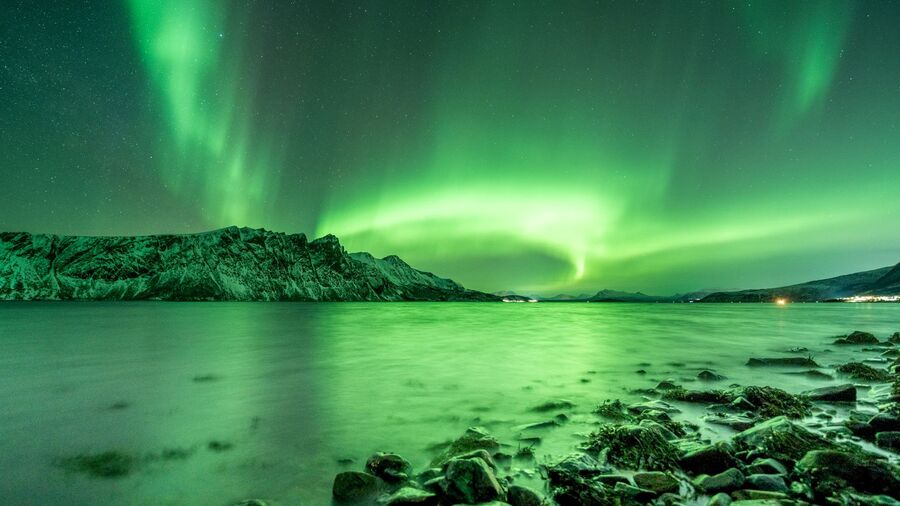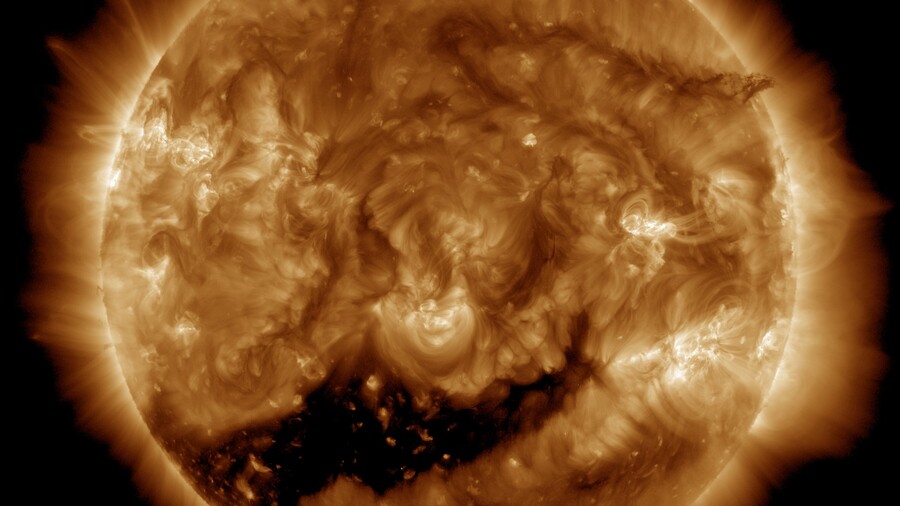
High-Speed Solar Wind From Coronal Hole
A G2 geomagnetic storm watch is in effect for June 14 due to high-speed solar wind, also known as High Speed Stream (HSS), from a coronal hole on the Sun. The solar wind is expected to interact with Earth’s magnetic field and could enhance auroral activity in the hours ahead.
As opposed to a coronal mass ejection (CME), often associated with solar flares, this event is driven by a coronal hole—a region of the Sun’s outer atmosphere (the corona) where magnetic field lines open up, allowing charged particles to escape more freely into space.
When this high-speed solar wind reaches Earth, it can disturb the planet’s magnetic field, triggering geomagnetic storms that may light up the skies with the northern and southern lights.
The incoming solar wind from coronal holes can reach speeds of 500–800 km/s—a significant increase from the average speed of around 300-400 km/s.
Where Can I See the Aurora?
In the Northern Hemisphere, the northern lights (aurora borealis) could be visible farther south than usual in these locations:
- North America: Canada and the northern US in states including Idaho, North Dakota, Wisconsin, Michigan, New York, and Maine.
- Europe: Scandinavia and northern parts of the UK.
In the Southern Hemisphere, the southern lights (aurora australis) could be visible further north than usual in these locations:
- Chile and Argentina: Southern parts of the countries.
- Australia and New Zealand: Tasmania and the southern parts of New Zealand.
Note: In some northern regions, it can be quite bright around this time of year due to the approach of the June solstice, which means shorter nights and limited viewing hours.
Sunrise and sunset times for your locationIf you’re positioned for a chance to see the northern or southern lights, we have some viewing tips to give you the best chance to see them:
- It needs to be dark: The aurora is best seen during the darkest part of the night.
- Find clear skies: Check the weather to see if there are clouds.
- Away from artificial lights: Find a spot far from urban light pollution.
- Look in the right direction: North in the Northern Hemisphere, or south in the Southern Hemisphere.

What Are Coronal Holes?
Coronal holes appear as dark patches in images of the Sun’s corona. They can form anywhere on the Sun but tend to be more persistent near the poles.
These regions are cooler and less dense, with open magnetic field lines that allow solar wind to escape more easily. The resulting high-speed streams can interact with Earth’s magnetic field and trigger minor to moderate geomagnetic storms.
Because coronal holes can persist across multiple solar rotations (about 27 days), Earth may experience recurring geomagnetic storms if it remains stable. The current coronal hole has already completed several rotations and is now making another return visit.

Note: Coronal holes are visible only in extreme ultraviolet and soft X-ray images—they cannot be seen with the naked eye.
CAUTION: Never look directly at the Sun without proper solar viewing equipment. Doing so can cause serious and permanent eye damage.
Solar Cycle 25: More Storms Ahead?
The current solar cycle, Solar Cycle 25, is now well underway. It was originally expected to peak in mid-2025, but recent data suggests it might have peaked already. With increased sunspot numbers, solar flares, and CME activity, this phase, known as solar maximum, increases the likelihood of geomagnetic storms and auroras.
NOAA and NASA have confirmed that the current solar cycle has been more active than initially forecast, prompting an updated prediction that it will peak earlier and at a higher intensity.
While the peak may come sooner, scientists note that auroral activity often remains strong for several years after solar maximum—meaning some of the best northern and southern lights may still lie ahead.
A Good Time to Look Up
While this geomagnetic storm may not bring the widespread auroras seen during major solar events, it offers a promising opportunity for skywatchers in northern regions.
As always, auroral displays depend on both solar conditions and local weather, so check the forecast and step outside after dark if the skies are clear.


